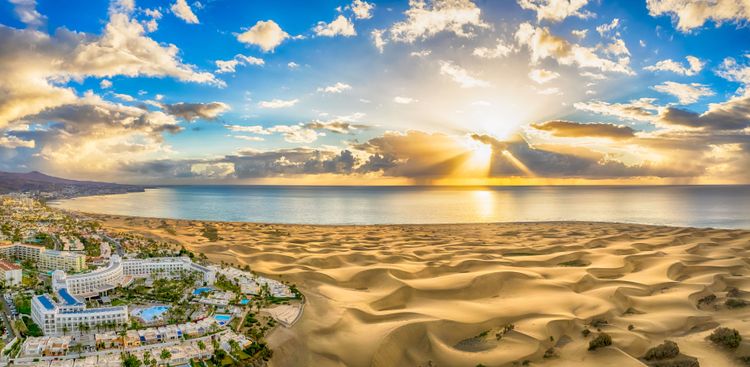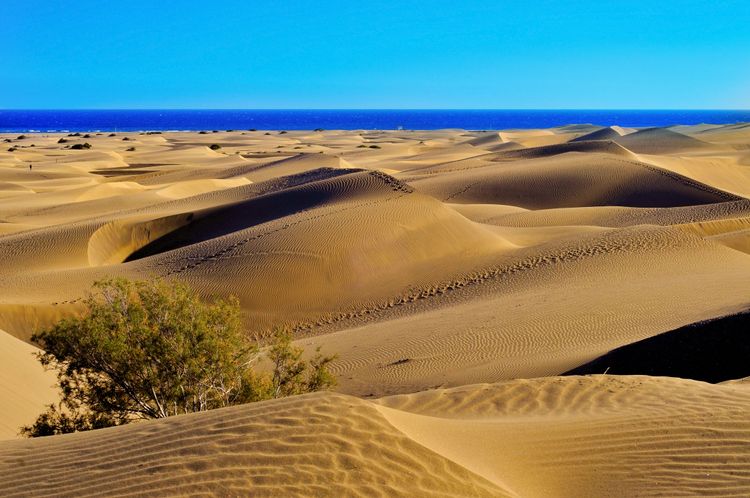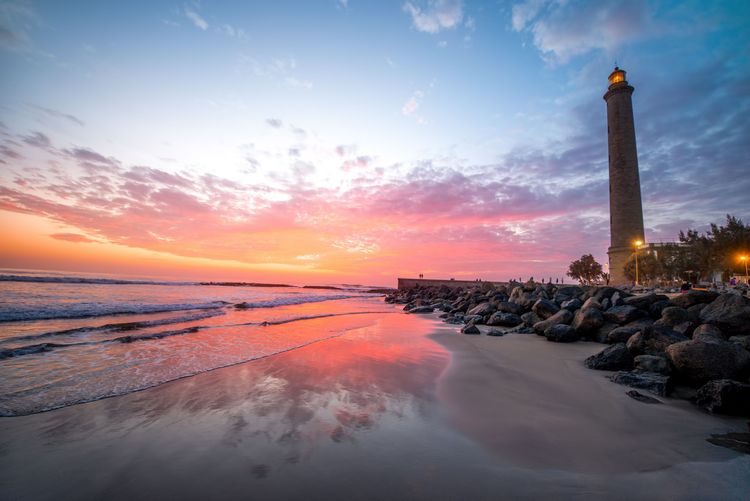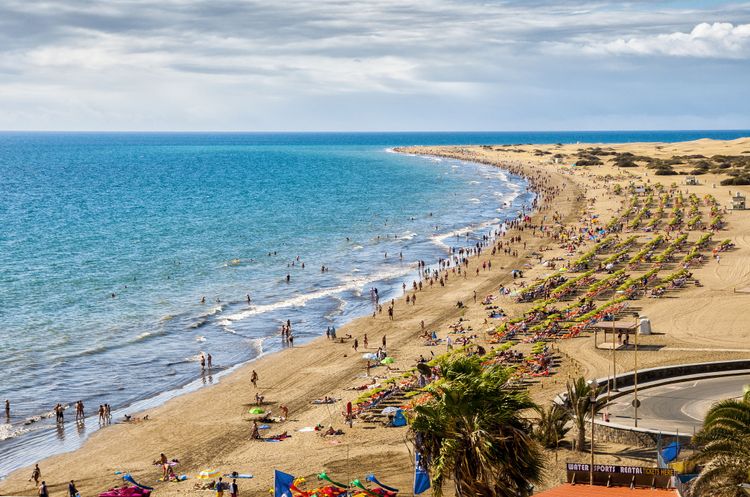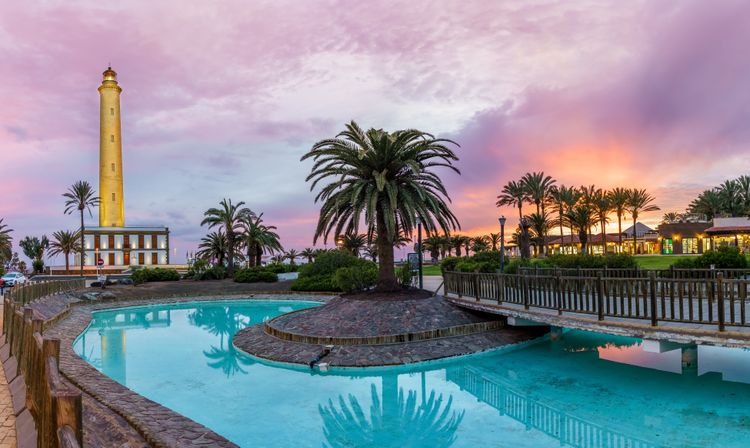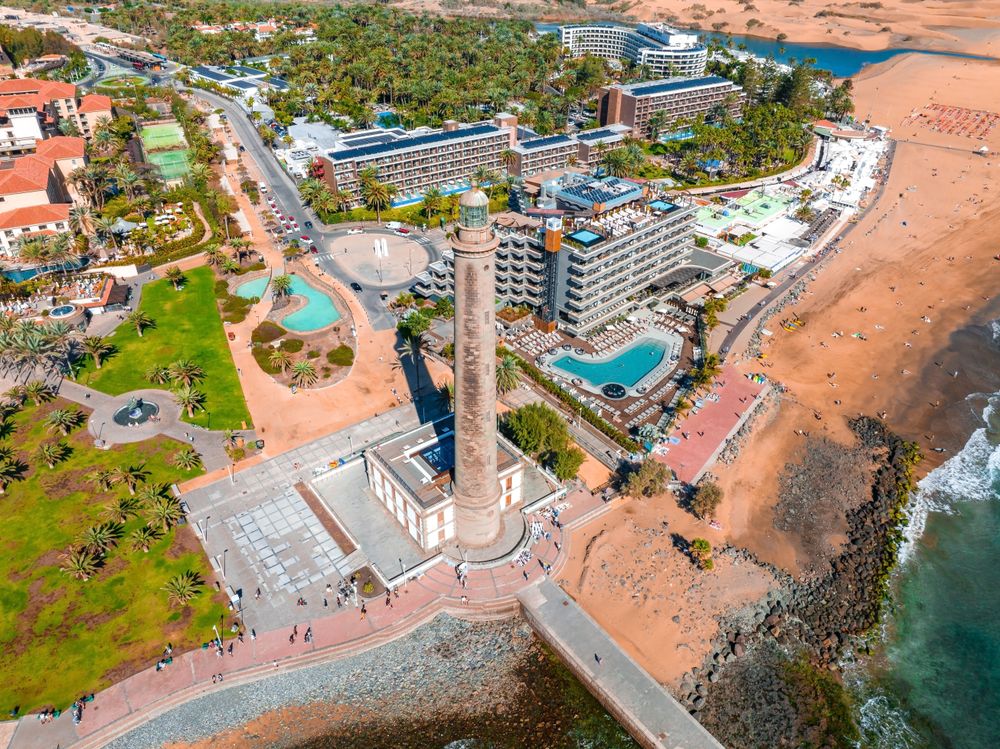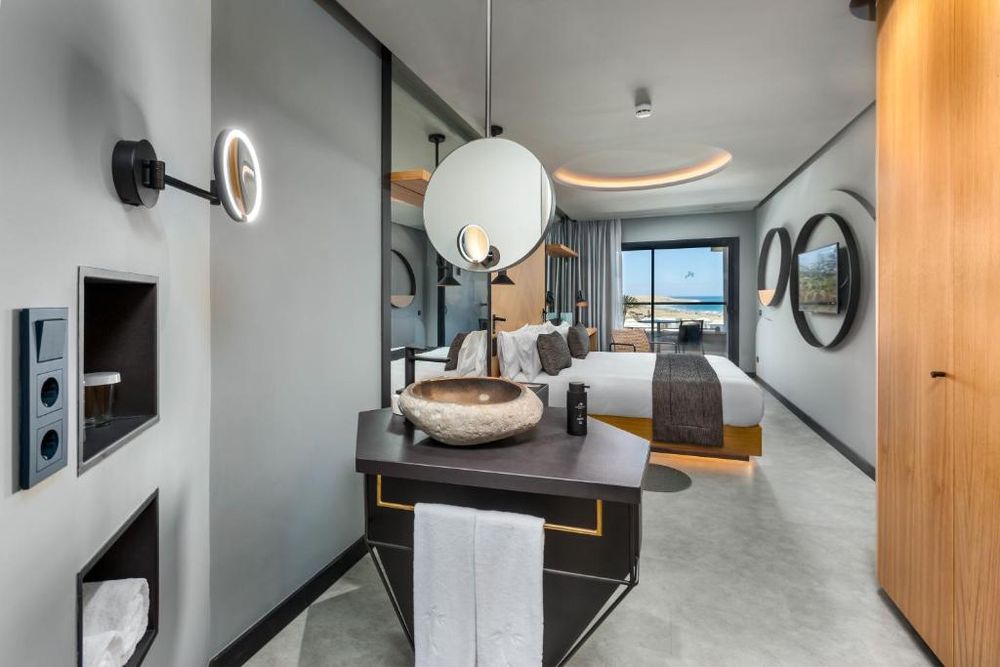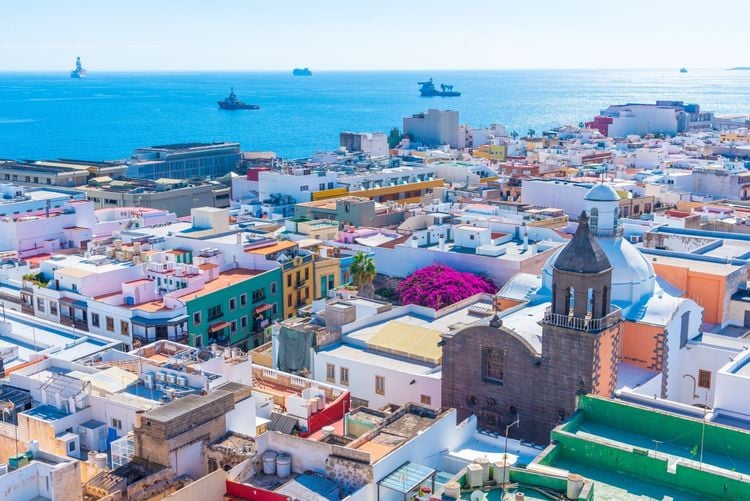Every year millions of tourists travel to Gran Canaria and stay on the Costa Canaria, located some 54 kilometres away from Las Palmas de Gran Canaria, which is actually the municipality of San Bartolomé de Tirajana. It is true that the tourist interest of the municipality is particularly centred on the coast, especially in Maspalomas.
As one of the main tourist resorts in the south of the island of Gran Canaria, Maspalomas has several activities and points of interest. These include beaches, shopping areas, parks and natural areas. One of these that you really have to visit is the Maspalomas Dunes. This site, declared a protected area for the first time in 1987 and then catalogued as a Special Nature Reserve in 1994, covers almost 404 hectares of sand dunes distributed in irregular shapes and precedes the beaches of Maspalomas and El Inglés. Within this area, three main ecosystems can be distinguished: the mobile dunes, the Pond and the Palm Grove.
